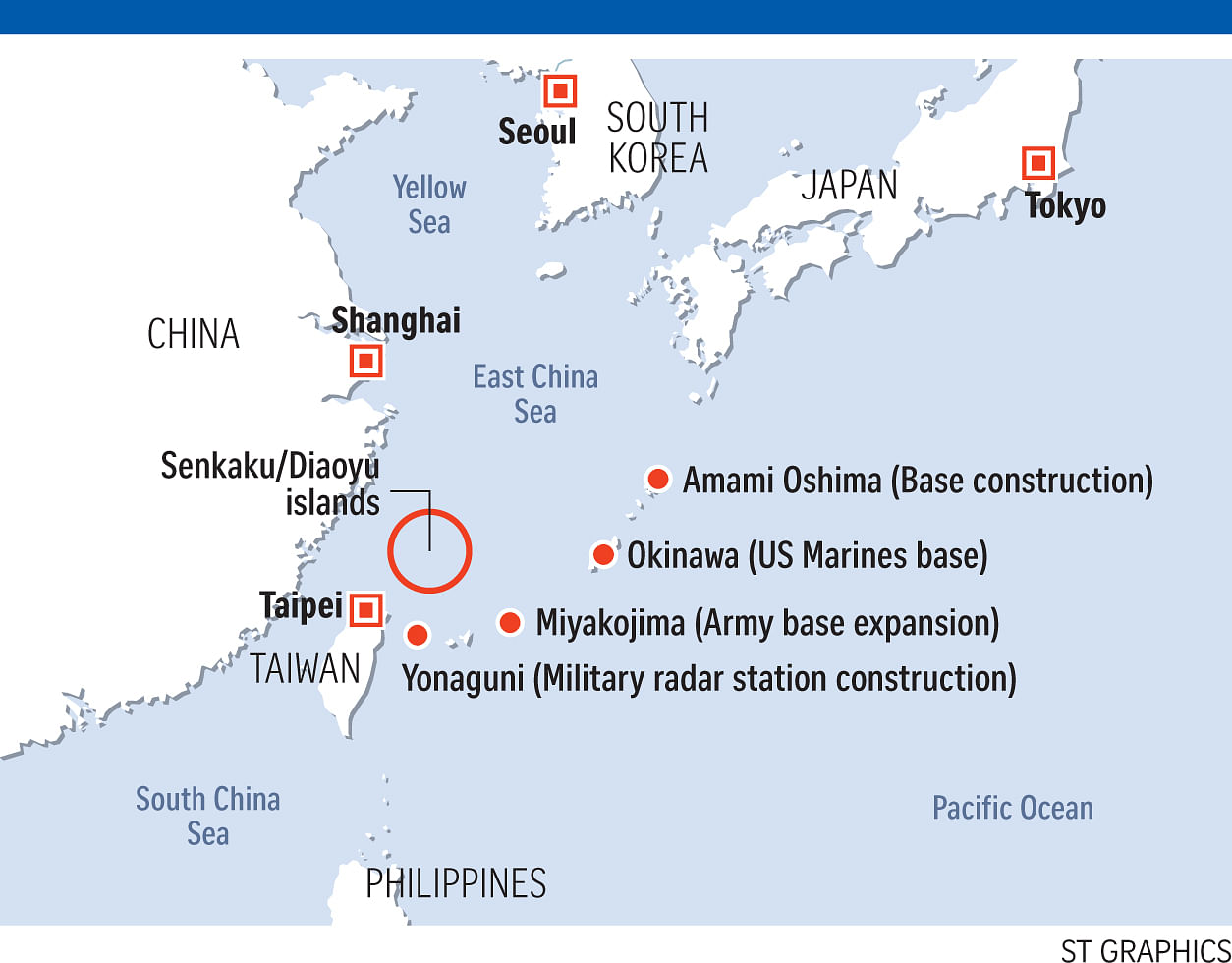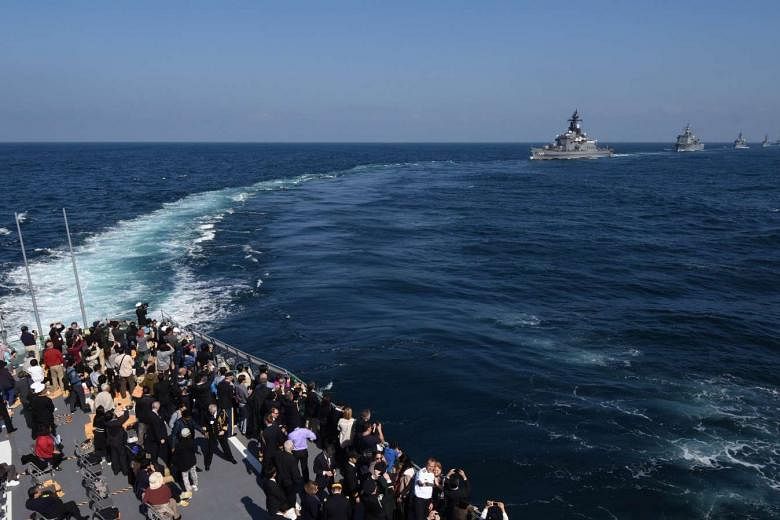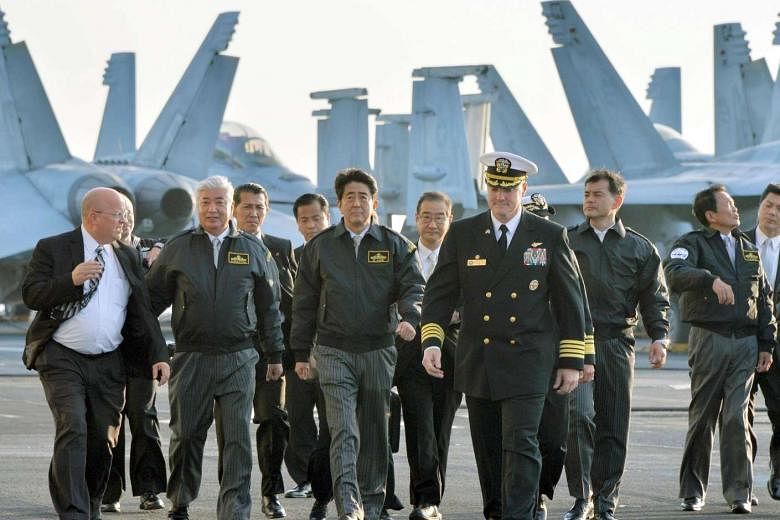TOKYO • Japan is fortifying its far-flung island chain in the East China Sea under an evolving strategy that aims to turn the tables on China's navy and keep it from ever dominating the Western Pacific Ocean, Japanese military and government sources said.
The United States, believing its Asian allies - and Japan in particular - must help contain growing Chinese military power, has pushed Japan to abandon its decades-old home island defence in favour of exerting its military power in Asia.
Tokyo is responding by stringing a line of anti-ship, anti-aircraft missile batteries along 200 islands in the East China Sea stretching 1,400km from the country's mainland towards Taiwan.
Interviews with a dozen military planners and government policymakers reveal that Japanese Prime Minister Shinzo Abe's broader goal of beefing up the military has evolved to include a strategy to dominate the sea and air surrounding the remote islands.

While the installations are not secret, it is the first time such officials have spelt out that the deployment will help keep China at bay in the Western Pacific, and amounts to a Japanese version of the "anti-access/area denial" doctrine, known as "A2/AD" in military jargon, that China is using to try to push the US and its allies out of the region.
Chinese ships sailing from the country's eastern seaboard must pass through this seamless barrier of Japanese missile batteries to reach the Western Pacific, access to which is vital to Beijing both as a supply line to the rest of the world's oceans and for the projection of its naval power.
China's President Xi Jinping has set great store by developing an ocean-going "blue water" navy capable of defending the country's growing global interests.
To be sure, there is nothing to stop Chinese warships from sailing through under international law, but they will have to do so in the crosshairs of Japanese missiles, the officials told Reuters.
As Beijing asserts more control across the nearby South China Sea with almost completed island bases, the string of islands stretching through Japan's East China Sea territory and south through the Philippines may come to define a boundary between US and Chinese spheres of influence. Military planners dub this line the "first island chain".
"In the next five or six years, the first island chain will be crucial in the military balance between China and the US-Japan," said Takushoku University's Professor Satoshi Morimoto, who was defence minister in 2012.
A US warship in late October challenged territorial limits that China is asserting around its new man-made island bases in the Spratly Islands. But Beijing may have established "facts on the ground" in securing military control of the South China Sea, some officials and experts say.
China's "ultimate objective is hegemony over the South China Sea, hegemony over the East China Sea", said Mr Kevin Maher, who headed the US State Department's Office of Japan Affairs for two years until 2011 and is now a consultant at NMV Consulting in Washington.
Japan's counter to China in the East China Sea began in 2010, two years before Mr Abe took power. The predecessor Democratic Party of Japan (DPJ) government pivoted away from protecting the northern island of Hokkaido against a Soviet invasion that never came, to defending the south-west island chain.
"The growing influence of China and the relative decline of the US was a factor," said Mr Akihisa Nagashima, a DPJ lawmaker who, as vice-minister of defence, helped craft that change. "We wanted to do what we could and help ensure the sustainability of the US forward deployment."
Professor Toshi Yoshihara of the US Naval War College said Tokyo could play an important role in limiting China's room for manoeuvre through the East China Sea to the Western Pacific, enhancing US freedom of movement and buying time for the alliance to respond in the event of war with China.
"You could say Japan is turning the tables on China," he said.
REUTERS


